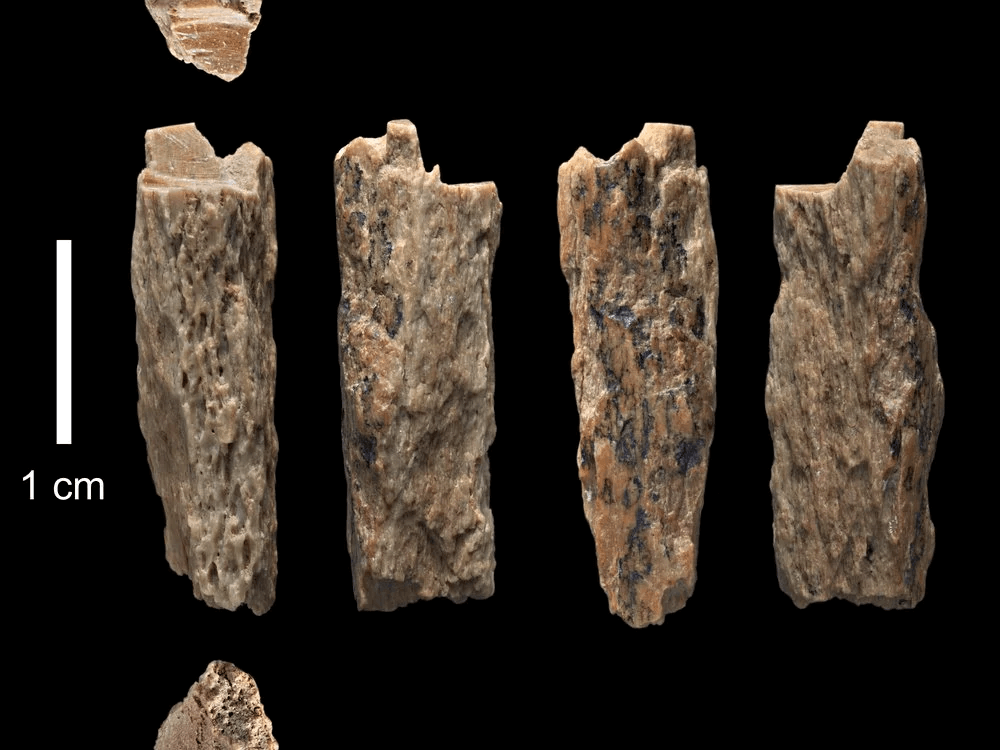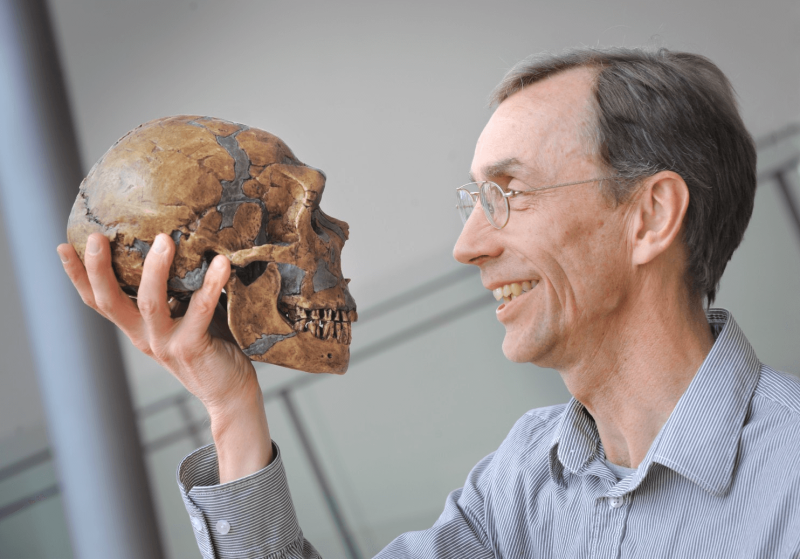I was thrilled to learn of the awarding of the 2022 Nobel Prize for Physiology or Medicine to Svante Pääbo, paleogeneticist and director of the Max Planck Institute for Evolutionary Anthropology in Leipzig. I’ve sat spellbound listening to him at conferences, and he would talk to journalists back in the day when one could cold-call a prominent scientist and chat.
Dr. Pääbo is best known for sequencing genomes of Neandertals and for discovering their contemporaries, the Denisovans, from a child’s finger bone. But Google Scholar reveals the depth and breadth of his journey into the mystery of ancient genomes, going back to the early 1980s. He’s led teams that have sequenced genes and genomes from cave bears, ground sloths, cichlid fish, kangaroo rats, mammoths, and a long list of hominins (us and our recent ancestors) and other apes.
My favorite work of Dr. Pääbo’s is the discovery that Neandertals and Denisovans interbred, opening up a view to the mixings of the earliest peoples. When covering this research in my human genetics textbook, it took me days to sketch out and color-code all the interconnections among the branches of anatomically modern humans, Neandertals, and the single line of Denisovans, for whom evidence is still sparse. I imagine I’ll need to update it for the new edition.

But my most exciting connection to the new Nobelist was when 23andMe informed me that I have quite a lot of Neandertal DNA!
The media often confuses percent Neandertal DNA. The measurement looks at 1,436 places among the 3 billion or so DNA bases of a human genome – times two for two sets of chromosomes – to count the ones where the base is the one in Neandertal genomes. The metric is “you have more Neandertal variants than _ percent of tested people.” Mine is 76%. It’s a look at percent of ancestors, not percent of a genome.
Here is what I wrote in 2018 in response to Svante Pääbo’s paper reporting the stunning evidence of the mating of a Neandertal female with a Denisovan male:

Once upon a time, in a cave in the Altai Mountains of southern Siberia, different types of ancient peoples were having sex.
A new report in Nature from Svante Pääbo, the Max Planck Institute for Evolutionary Anthropology superstar, and his team introduces the young teen “Denisova 11.” I’ll call her Eleven, in honor of the beloved character in the TV show Stranger Things. She was a type of archaic human called a Denisovan, pronounced “Denise-o-van.”
The title of the paper tells the whole tale: “The genome of the offspring of a Neandertal mother and a Denisovan father.”
Introducing Denise
The research team introduced the first Denisovan, named Denise, in 2010, based on a preliminary genome sequence from her finger bone, discovered in 2008 in the cave. Denise lived 32,000 to 50,000 years ago and had dark skin and brown eyes and hair. Her genome included some Neandertal DNA sequences, a clear sign there’d been some mixing of genomes.
A few other Denisovans emerged from the collection of 2,000 or so bone fragments collected from the cave. “The Denisova Genome and Guys Banging Rocks,” which I wrote for Scientific American blogs in 2012, fleshes out the story.
We only have evidence of Denisovans from that one cave, but abundant bones indicate that Neandertals roamed western Eurasia. Modern human genomes replaced both by about 40,000 years ago, with some Neandertal DNA remaining in today’s European genomes and Denisovan DNA in Northern Island Melanesians and in Papua New Guineans. Australian aborigine genomes harbor sequences from Neandertals and Denisovans.
Neandertals spread their seed
DNA evidence is collected nondestructively, from bits of dust shaved from bones. Then gene and genome comparisons can fill in some of the blanks, along with traditional types of evidence.
- Calculating backwards from DNA sequence differences, using a molecular clock based on mutation rates, reveals that Neandertals and Denisovans diverged from a shared ancestor more than 390,000 years ago.
- Eleven’s mitochondrial DNA was Neandertal, and therefore so was her mother.
- The thickness of a bone fragment indicates that she was at least 13 when she died.
- Radiocarbon dating places her time in the cave to more than 50,000 years ago.
The researchers found that 38.6% of Eleven’s DNA pieces hailed from a Neandertal and 42.3% from a Denisovan. That’s about equal, considering that the parents shared a distant ancestor, so some sites in the genome are identical in both chromosomes, obscuring parental origin. The explanation most consistent with shared sequences approaching 50:50 is that Eleven had one Neandertal parent and one Denisovan parent, rather than being the product of a population with many N-D couplings over time.

The teen’s genome also harbors at least five, million-base-long, stretches, identical on both chromosomes of a pair. These are fully Neandertal. So the Denisovan dad had some Neandertal DNA himself. Plus, those DNA sequences don’t quite match those from Eleven’s mom, suggesting that Neandertal DNA might have entered the lineage a few times, as far back as 300 to 600 or so generations.
In a nutshell, lots of mating was going on! And these folks from what anthropologists are deeming different groups presumably looked and smelled enough alike to do the deed and beget offspring.
Neandertals may have been around even more recently than Eleven’s time of 50,000 years ago. DNA from a jawbone from “An early modern human from Romania with a recent Neanderthal ancestor,” also published in Nature from Pääbo’s team, deduces an encounter with a Neandertal who may have lived just four to six generations before the date of the jawbone, about 40,000 years ago.
The future of humanity
The new report glimpses the sorting out of genomes – sex – that led to us, even as lineages yet unknown branched off from the path to modern humanity. But imagining what actually went on in that cave is a little like trying to reconstruct the story of the wizard of Oz solely from the wicked witch’s feet curling up under the house that crushed her. Still, any paper on the fascinating Neandertals and Denisovans, whether they hooked up or not, makes me think about the future of our species
Things could go either of two ways.
People might continue to mix and blend, diluting and ultimately finally destroying the notion of races that never had a basis in human biology anyway. Or hatred of those perceived as “other” might prevail, fueling a splintering of humanity.
How far will the “us and them” mindset go?
The current divisiveness is so unrelenting that even when I read technical articles about our deep past, I can’t help but imagine humanity in a time before our advanced brains invented the idea of “otherness.”
Ricki Lewis has a PhD in genetics and is a science writer and author of several human genetics books. She is an adjunct professor for the Alden March Bioethics Institute at Albany Medical College. Follow her at her website or Twitter @rickilewis































